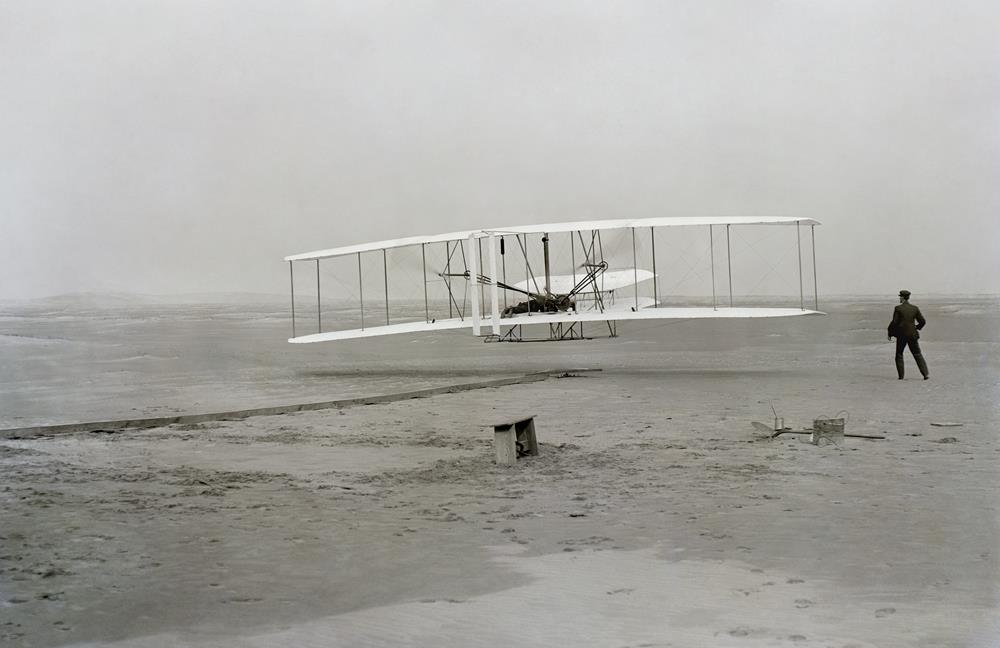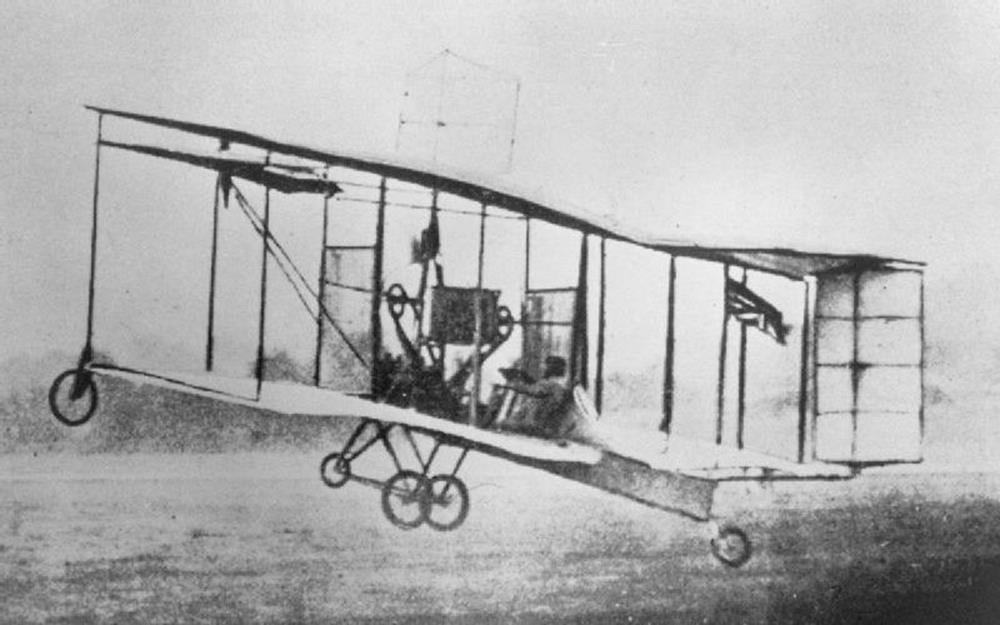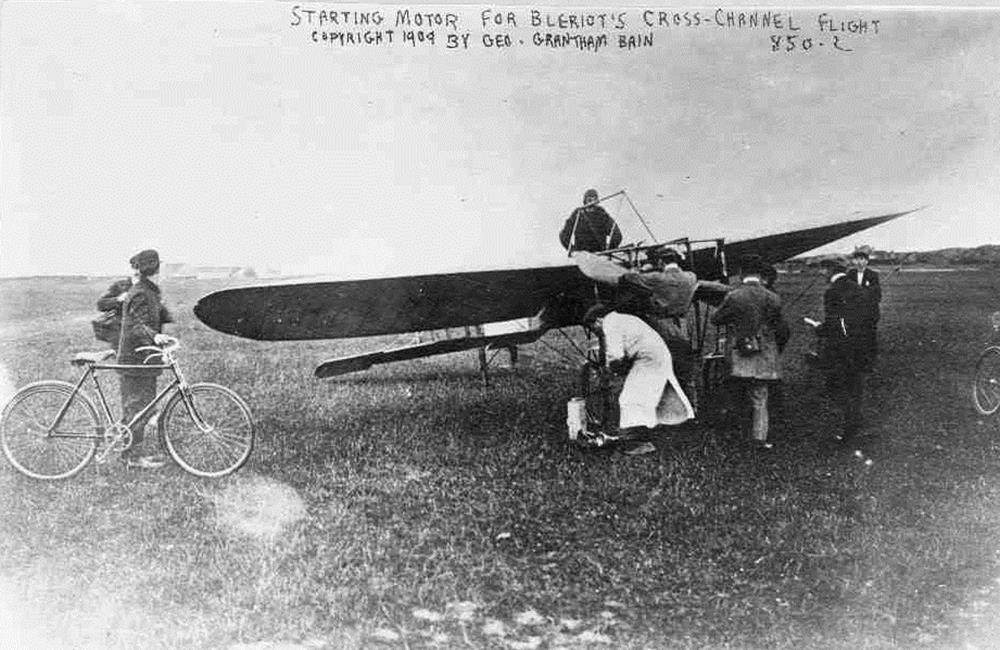Early Aviation – 1903 to 1909
| < Index | Δ Index | British Naval Aviation > |
When Carlingnose Airstation was established in 1912, aviation was very much in its infancy, and everyone involved was a pioneer.
The first ever heavier than air powered flight had taken place a mere nine years earlier. . .
 December 17th 1903 – First heavier-than-air powered flight. 37 metres
December 17th 1903 – First heavier-than-air powered flight. 37 metres
On December 17th 1903, Orville and Wilbur Wright made the first controlled, sustained, powered heavier-than-air flight, on a beach four miles south of Kitty Hawk, North Carolina. That flight lasted 12 seconds, and covered 37 metres. The fourth flight later that day covered 260 metres in 59 seconds.
The first British heavier than air flight had taken place only four years earlier . . .
 October 16th 1908 – First British heavier-than-air powered flight. 464 metres.
October 16th 1908 – First British heavier-than-air powered flight. 464 metres.
On October 16th 1908, Samuel Franklin Copy made the first sustained aeroplane flight in Britain, at Laffans Plain, Farnborough. He built his own plane in 1907 at the Army Balloon factory in Farnborough – “The British Army Aeroplane No 1” or “Cody 1.” The flight was of 464 metres, and ended in a crash – a wingtip touched the ground as Cody attempted to turn and avoid a tree.
And the first long-distance flight only three years earlier.

July 25th 1909 – First heavier-than-air powered flight across the English Channel 22 miles – 36 km
On July 25th 1909, Louis Bleriot made the first powered flight across the English Channel, from Calais to Dover. The flight lasted 36 minutes and 30 seconds.
Although the range of a flight had now been extended, manoeuvring was still a major issue.
Even turning an aeroplane was a very difficult exercise. Bleriot crash landed at Dover.
| < Index | Δ Index | British Naval Aviation > |